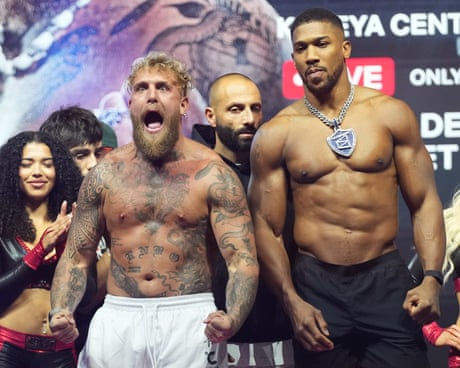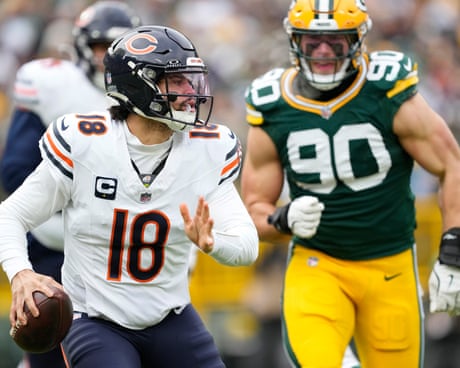
TORONTO — Ten years ago, when the Toronto Blue Jays found themselves at a juncture point somewhat similar to the one before them now — front office taking heat, a core in need of help, time running out on executives and players alike — they pushed forward in a big way.
The acquisition of Josh Donaldson from the Oakland Athletics and the free-agent signing of Russell Martin to an $82 million, five-year contract highlighted a roster renovation by then GM Alex Anthopoulos that was as ambitious as it was creative. Along with trades adding Marco Estrada for Adam Lind, Devon Travis for Anthony Gose and Michael Saunders for J.A. Happ, the club immediately transformed itself, although another slate of bold adds at the deadline — headlined by Troy Tulowitzki and David Price — were needed to pull it all together.
While there was debate at the time over which direction the Blue Jays should go, “Alex had a vision of really competing that year and he knew that we had some pieces,” recalls Dana Brown, the Houston Astros general manager who at the time was a special assistant to Anthopoulos in Toronto.
“I remember the year before, we sent people in to see Josh Donaldson play toward the end of the year and got reports back about how well he was doing,” Brown continues. “Alex had this vision of what he was going to do with the team and it was going to be pedal to the metal. And that whole year, his vision was locked in. At the start of that year, we used the prospect capital to go ahead and push forward, to try to get us into a position that once the deadline came, we were going to really be able to push through it and it worked out.”
Those Blue Jays, of course, ended up rallying to win the American League East, eventually losing the ALCS in six games to the Kansas City Royals, rewarding the faith Anthopoulos showed in his roster. A decade onwards, with GM Ross Atkins saying the current team is “definitively committed to this core,” the club is trying to pull off a set of similarly transformative off-season moves.
The most direct lane to impactful change this winter is Juan Soto and as such, the Blue Jays’ participation in the superstar’s sweepstakes is understandable. At the same time, leaks about how aggressive they’re being in pursuit of the slugger should be taken with caution, as with powerful agent Scott Boras representing Soto, his desire for a public stalking-horse is an obvious dynamic in the process.
That’s very different from the chase for Shohei Ohtani a year ago, which was more merger-and-acquisition than free-agent signing and money alone wasn’t going to win the day, as all finalists had to agree to the unique contract structure he presented.
The Blue Jays know all that better than anyone and it’s possible they’re happy to let Boras use them to drive up the price for Soto in the hopes of better access to some of his other free agents in a boffo class afterwards. They did something akin to that in 2019, when they chased Gerrit Cole and ended up with Hyun Jin Ryu.
Whatever they end up doing this time, even if it’s landing Soto against all odds, one or two major moves on their own won’t be enough to propel the Blue Jays upwards in 2025, just as the 2015 team needed more than just the boffo off-season.
A key difference between the current situation facing Atkins and the one from a decade ago faced by Anthopoulos is how much deeper the organization was then, compared to now.
Back then, the Blue Jays used three players from the big-league roster (Lind, Happ and Brett Lawrie) and four prospects to make the winter deals happen and then swapped out 11 more pitching prospects along with Jose Reyes at the deadline. They also opened the season with six rookies on the roster, getting meaningful contributions from three — Travis, Aaron Sanchez and Roberto Osuna — and overcame the loss of sophomore Marcus Stroman for nearly the entire season.
Right now, the club doesn’t have the same depth of inventory, even after last summer’s deadline sell-off significantly restocked a troublingly thin system. Evidence of that came Tuesday, when the deadline for protecting prospects from exposure in next month’s Rule 5 draft came and went without a single addition to the 40-man roster.
The Blue Jays do have a stockpile of young, on-the-cusp players to both help fill out the roster and to trade from, highlighted by Spencer Horwitz, Leo Jimenez, Addison Barger, Leo Jimenez, Joey Loperfido, Will Wagner, Jonatan Clase, Orelvis Martinez and Jake Bloss.
But to close the gap between a 74-88 finish in 2024 and the post-season in 2025, the Blue Jays can’t overestimate how much additional production will come internally, as development isn’t linear and there are no guarantees with young players.
Such thinking helped inform the Blue Jays’ decision-making in 2014-15, as “sometimes you start looking at the prospects and realize that they’re a little further away from being who they need to be in order to win, not necessarily further away from the big-leagues,” says Brown. “A lot of guys get to the big leagues and still need that year, year-and-a-half to really make the adjustment. We thought that those guys were probably a little bit more than a year, maybe 18 months from really peaking out. So we thought we need to go get some guys to compete right away.”
The same calculations loom for the Blue Jays during an off-season slowly building toward inevitable action.
—
RUSHING BLOSS: In an ideal world, the Houston Astros wouldn’t have brought Jake Bloss up to the big-leagues last summer after only 20 games of pro ball, but “we had at one point five starters on the IL and so we were kind of desperate,” GM Dana Brown admits.
“He was throwing the ball very well at double-A so we rushed him,” Brown continues. “We felt like he was going to be able to deal with it. He came up and did as good as he could do. It wasn’t a train wreck. He kept us in a couple of ball games, but we rushed him a little bit. Now that the Jays have him, I’m sure they probably won’t have to rush him as fast.”
The Blue Jays certainly slowed things down for the 23-year-old right-hander after he was acquired as the centre-piece in the Yusei Kikuchi deadline deal. A third-round pick in 2023, Bloss opened the year at high-A Asheville, four starts later moved up to double-A Corpus Cristi, made his big-league debut June 21 against Baltimore, went down to triple-A Sugar Land, returned to the majors for two more starts and was then traded.
While he was initially expected to join the Blue Jays when he arrived, the club instead took a more cautious and controlled approach with Bloss, starting him eight times over the season’s final two months at triple-A Buffalo. While he’ll be in the mix next spring, he’ll be given more runway to hone his game after a remarkably fast rise this season, one the Astros didn’t necessarily expect.
“Before we drafted him, there was consensus – we all liked him, and that’s rare to have a draft pick that everyone likes,” says Brown. “We were excited about him. We felt like he had a chance to be a good fourth starter with some upside to be a three, potentially, but felt pretty comfortable he could be a fourth starter. He was on his way and we kind of interrupted his development by calling him up quickly because we had dire need at the major-league level. Ultimately we put him in the trade.”
—
ALL IN THE FAMILY: Thanksgiving is always a hectic affair for the Minasian family but the chaos went to a new level in 2010 when brothers Perry, then with the Blue Jays, and Zack, then with the Milwaukee Brewers, brought their trade talks to the dinner table.
Their teams had been discussing a potential trade for a while and momentum started building as they arrived at their grandmother’s house for the holiday. Throughout the night, the duo hammered out the framework of what eventually became the Shaun Marcum-for-Brett Lawrie deal finalized Dec. 6.
“I remember my mother yelling at us to stop working and enjoy Thanksgiving,” says Perry, now GM of the Los Angeles Angels. “For some reason, it really got going that day and I remember just being on the phone with Alex (Anthopoulos), he was on the phone with Doug (Melvin, the Brewers GM at the time) and we were just going room-to-room to separate, and then we’d meet to talk, and then we’d separate, meet and talk. It was really, really cool and something I’ll never forget.
“It was the first deal we had actually hammered out together,” he added. “But everybody thought we were pretty rude because we were leaving, going back, leaving.”
The brothers are free to consummate more deals and make the final calls themselves after Zack was promoted to GM of the San Francisco Giants on Nov. 1. And while they’ve had hundreds of different conversations over the years, the Lawrie-Marcum talks is “the one that really sticks out,” says Perry. “Who knows, maybe going forward there will be more.”
“I’m just happy for him to have this opportunity with an outstanding organization in a place he loves,” the older brother adds. “I know how hard he’s worked over the years. We both, to a certain extent, took leaps of faith leaving Texas. We loved Texas and leaving Texas was hard, hard for him, hard for me. But we felt like we needed to. He went to Milwaukee and did his own thing. I went to Toronto, did my own thing, and I couldn’t be more proud of how he’s ended up and where he is now. I think he’s going to be great.”






